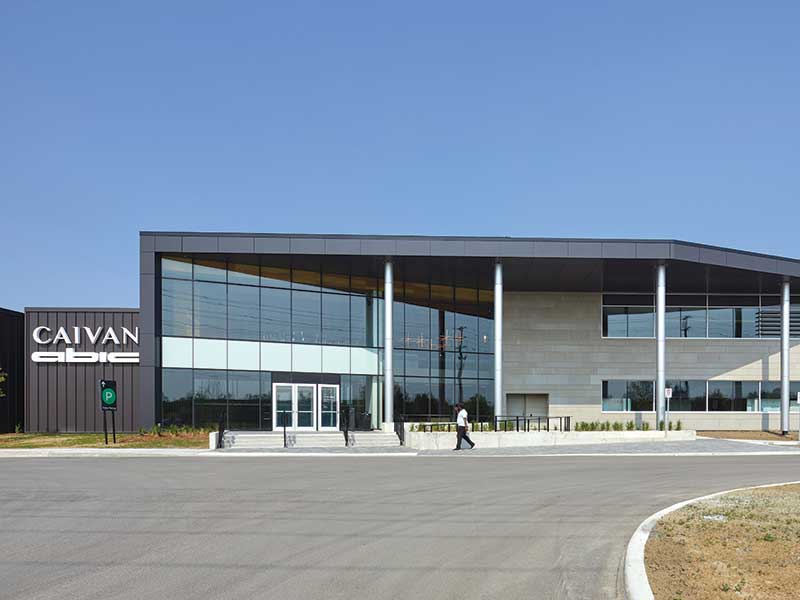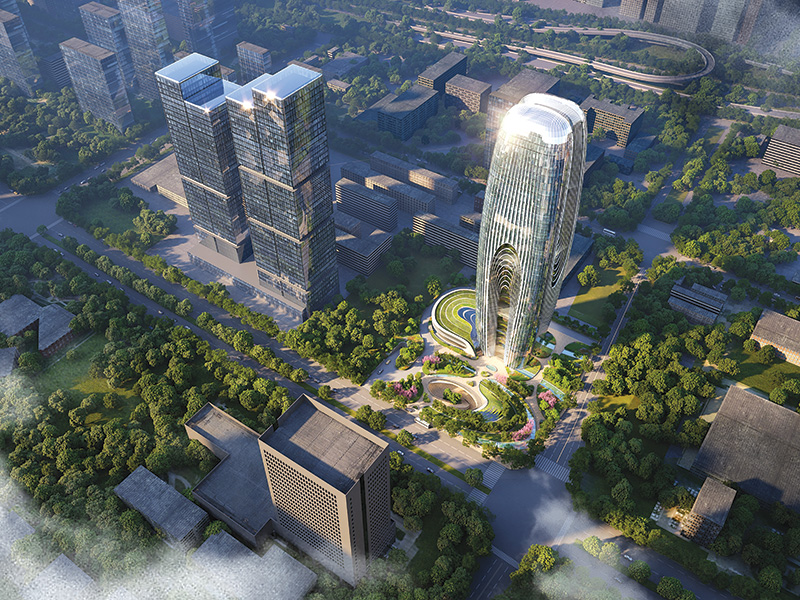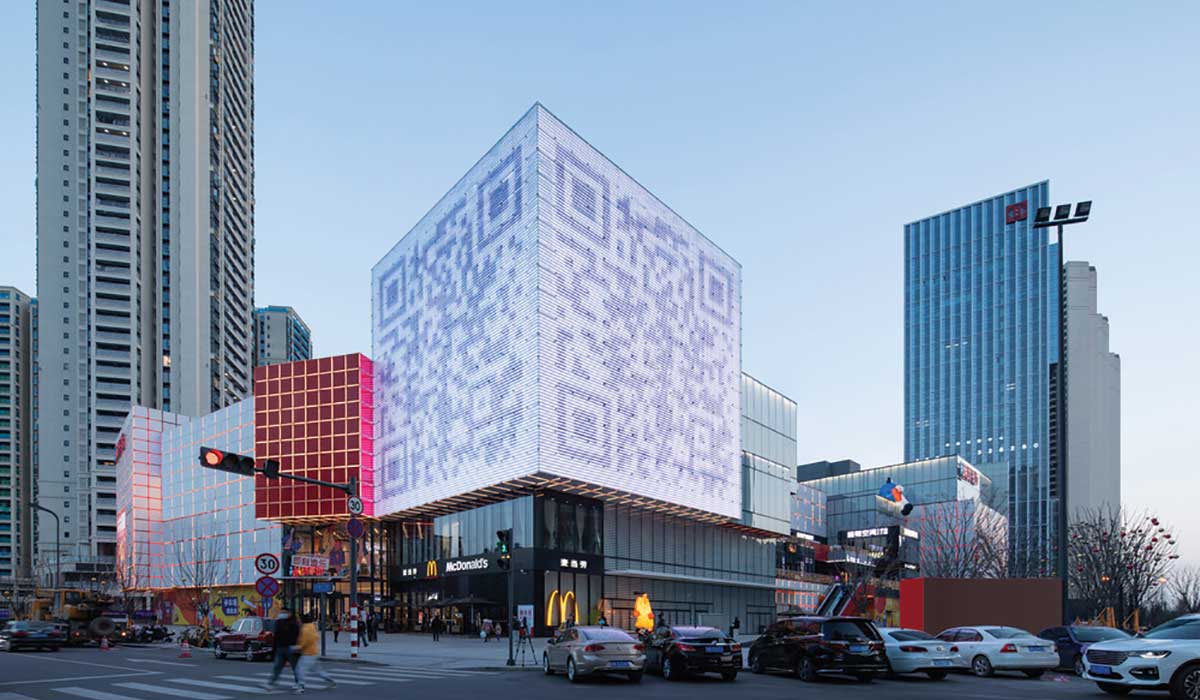
Fact File
Project Name: UNIFUN Tianfu Chengdu
Type: Community Mall
Client: China Overseas
Location: Xianghe San Street, Tianfu District, Chengdu, China 7
Construction Area: 42,316.9 sqm
Source: v2.com
Photographer: Arch-Exist
Online and Offline Interaction
UNIFUN Tianfu Chengdu presents an aesthetic inspired by Rubik’s Cube. White pixel modules with red details and large multi-media façade systems create different spatial and visual effects with the passage of time. During the daytime, the cuboid volumes blend into the orderly surroundings of the community and introduce a large area of outdoor terraces for locals to enjoy the street life. While at night, light penetrates through the openings of the aluminum panels’ joints, enriching the night cityscape with a sense of futurism. The architecture can be interpreted as an interface between the virtual and physical world.
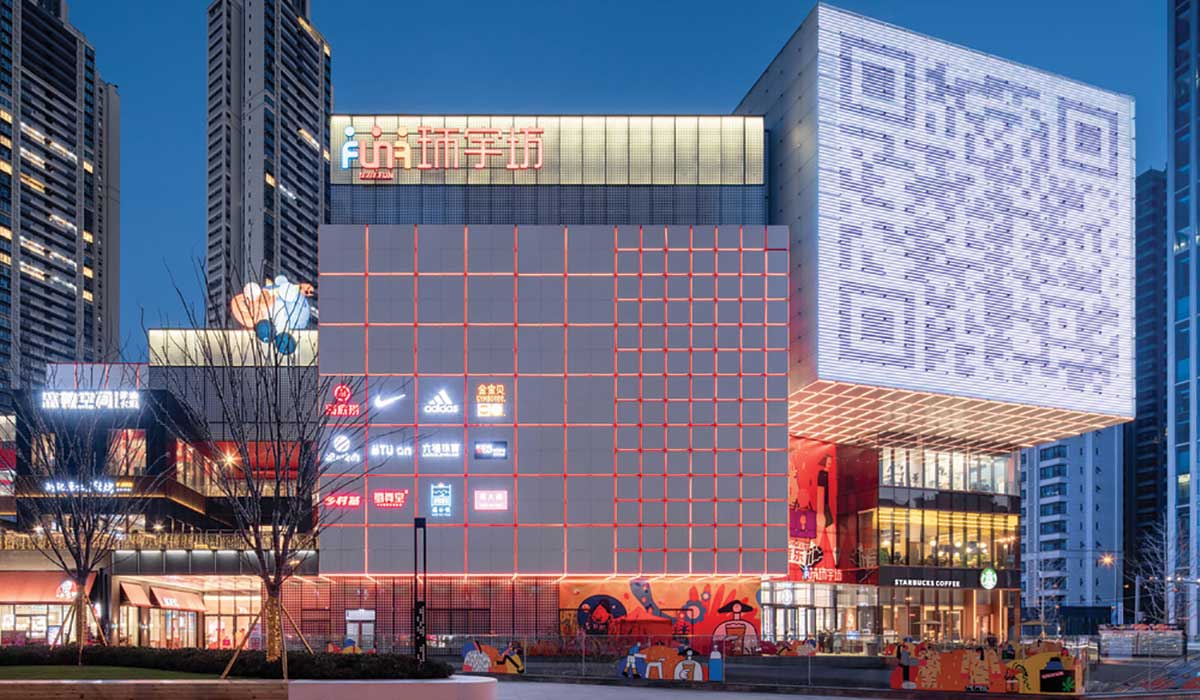
Lighting System and Media Façade
The utility of lighting and photomontage transforms the building into a media device that brings a new understanding of façade into the architecture world. One of the important factors that affect the media facade is lighting technology, for instance, the visual of a regular facade can be varied by lighting to present a series of free-flowing patterns. Different lighting effects can be continuously adjusted to change the façade which will also interact better with the multi-media screen. From light to shade, color, and graphics changes of the façade system, CLOU architects expect to achieve different visual effects for UNIFUN.
Promotion Canvas
The project seeks to integrate both online technology and commercial sensibilities into the architecture through modulated interactive façade systems. The digital canvas, as an upgrade of traditional façade advertising, could broadcast exciting and informative content in real-time such as branding images, online advertisement, social media activities, and offline event information.
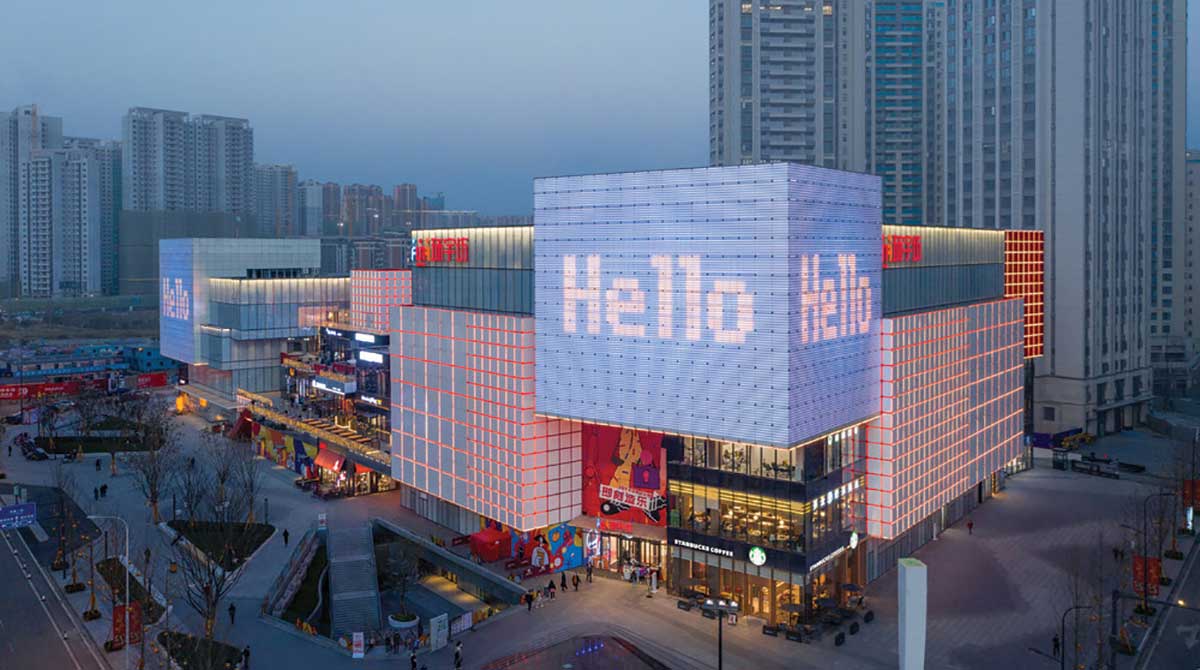
Façade Gamification
In addition to the concept of “cube”, the façade was also inspired by the animated game culture in the age of social media. The design features glass panels with LED curtains that could be developed into an architectural platform for digital context add-ons. Within this context, the aim here is to deliver an innovative design that responds to the exciting prospect of regional development while opening up possibilities and extending the reach of architecture.
